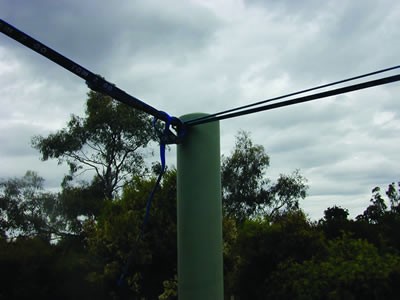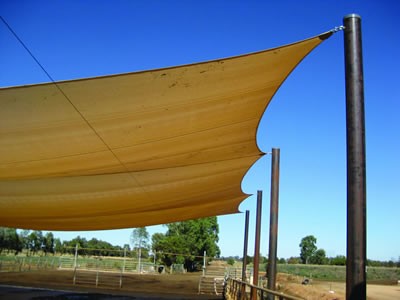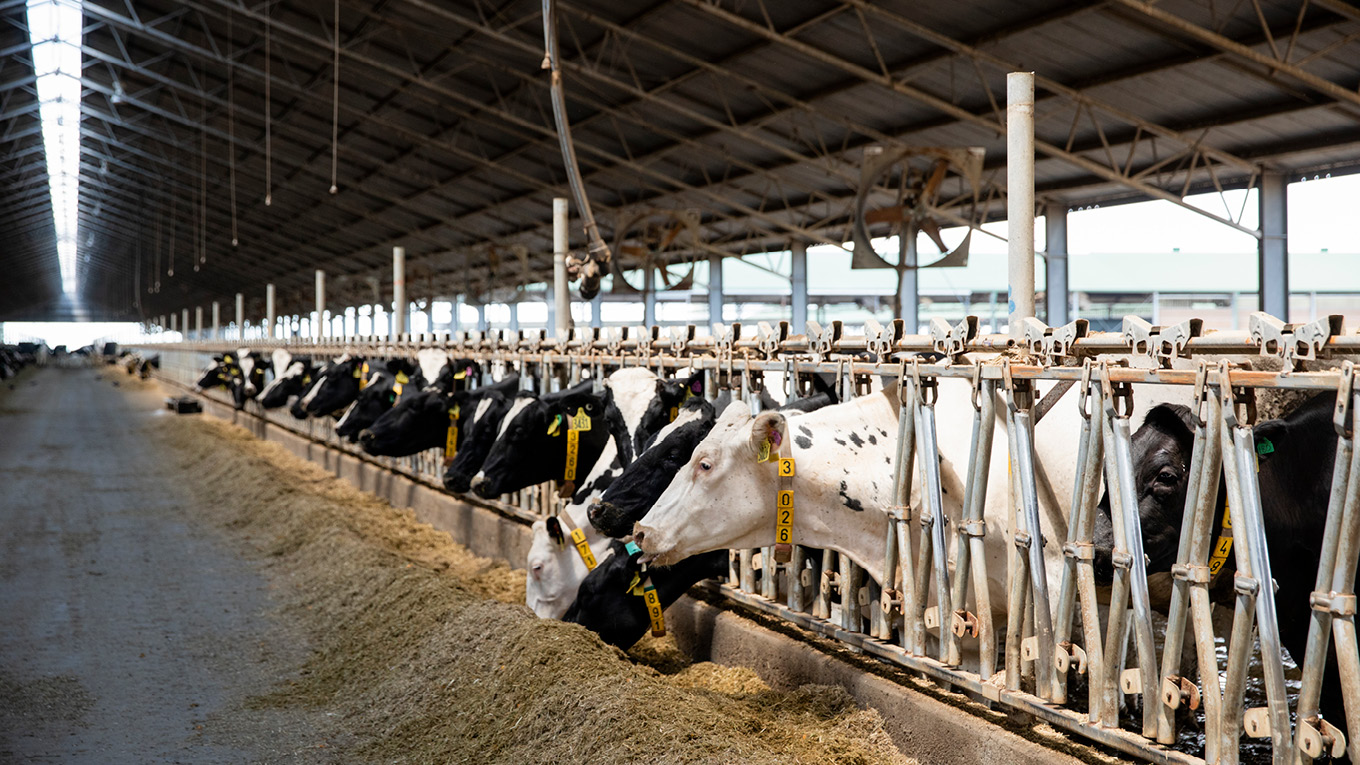Soft-roof Shade Structures
On this page
Minimising heat gain using shade should be the first priority for farmers hoping to keep their cows cool.
There are two main options for providing shade in the dairy yard and feed pads.
The cheapest is shade cloth and if well constructed and maintained it can have a lifespan of at least 10 years.
Strengths
- Shade cloth is porous, so heat evaporated from cows can vent through it.
- Can be manufactured off-site then installed in a day.
- Can be removed in cooler months.
- In most council areas no planning permit is required, as shade cloth is not considered a solid roof structure.
Limitations
- Can be affected by hail damage and machinery exhausts.
- Shorter lifespan compared to a solid-roofed structure.
- If not well-designed and constructed, shade cloth can rip in high wind.
Keys to success
- Seek a professional for advice from a registered engineer and/or builder.
- Use shade cloth with a minimum solar rating of 80%, minimum 300 GSM (gram per square metre), and at least a 10-year warranty against UV degradation. Green or black material is preferred.
- Apply tension sufficient enough to shade cloth to prevent damage during windy conditions. Monitor tension regularly, especially after strong winds.
- A minimum height of 3.6m but ideally 4m to allow for adequate airflow under the structure, effective use of sprinklers and fans, and good machinery access.
- A pitched roof is better than a flat roof as it enhances convective air movement.
- Support posts used should be structural grade steel. They should be located outside the dairy yard to prevent contact with manure and water, and so they don’t interfere with yard washing.
- Cure deep footings for an extended period (at least 2-3 weeks) before bearing any load.
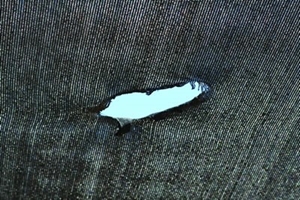
Damage to shade cloth caused by tractor exhaust. This shade cloth structure is only 3.5 m high. Shade structures should be ideally at least 4m.
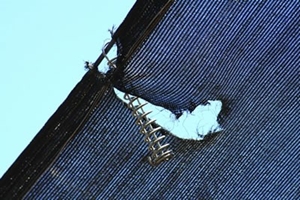
Damage to shade cloth caused by poor maintenance. Ensure that springs that become detached are re-attached as soon as possible.
Shade-cloth structure design
Several forms of shade cloth structures are available including span structures, peaked sail structures, cantilever structures as pictured below and tent like structures with large central supports.
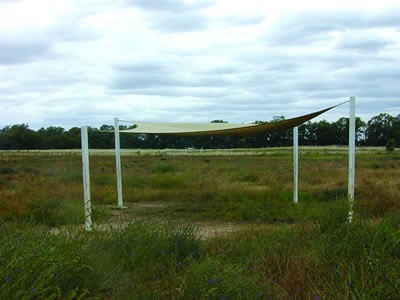
Stresses on shade cloth structures
|
Loading Problem |
Design Solution |
|
Wind Loads |
|
|
Ripples or waves may lead to premature failure |
Ensure the shade cloth is adequately tensioned. |
|
Horizontal winds generating lift (like an aeroplane) |
Flatten to between 10 and 14° or install it with an inclination in excess of 20° . Roof angles of 15 to 18° should be avoided. |
|
Poor materials selection, proneness to ripping in high wind loads. |
Choose adequate fabric strength, lack of structural reinforcement and excessive spans which can lead to billowing. |
|
Dead Loads |
|
|
Gravity |
Brace frames or cables supporting shade cloth are usually used to stay or brace posts. |
|
Poorly distributed loads |
Angled posts provide tension to evenly distribute dead loads but this can also contribute to instability when the cable support is removed. |
|
Cloth impregnated with dust or supporting leaves, twigs, hail, ponded water or wetted from beneath |
Lighter connections and structural system such as cabling |
|
Live loads |
|
|
Hailstones or rainfall cascading down a roof, water pooling on the canopy or being shed through or from shade cloth. |
Regular cleaning and maintenance. Inclusion in maintenance and operational schedules |
|
Human traffic on roof |
Prohibited under WHS/OHS regulations for shade cloth roof structures. |
|
Clogging from water pools |
Regular cleaning and maintenance. Inclusion in maintenance and operational schedules. |
If you intend to install a shade structure, consult a registered builder or structural engineer.
Alternatively, if you are buying a package shade cloth structure ensure that structural computations are supplied, the installers are experienced and local building regulations are met.
-
Design considerations for maximum effectiveness and useful life
-
Tension system and maintenance considerations
-
Support posts and foundations
-
Fastening fabric to posts
-
Design elements
-
Location considerations
